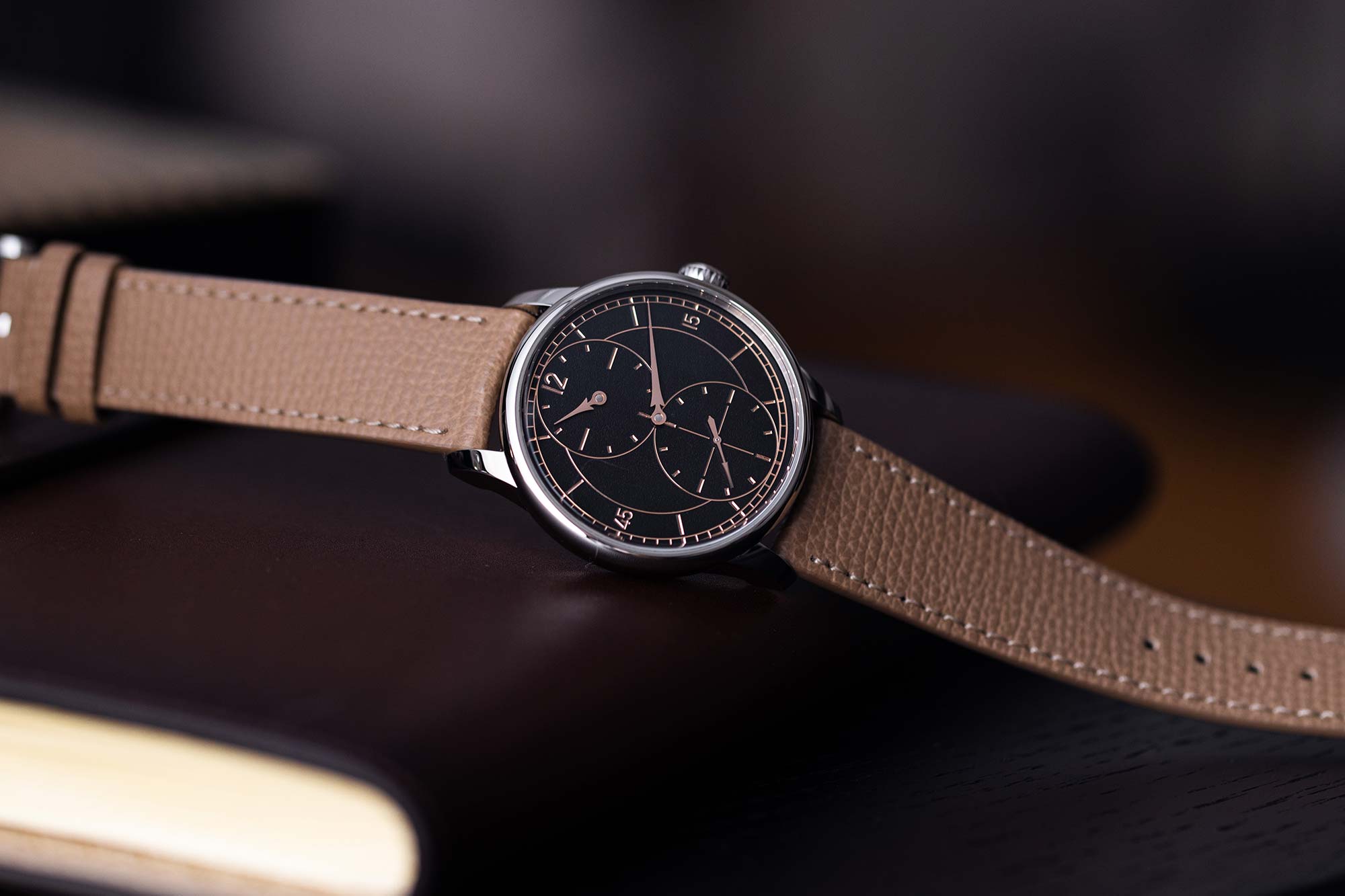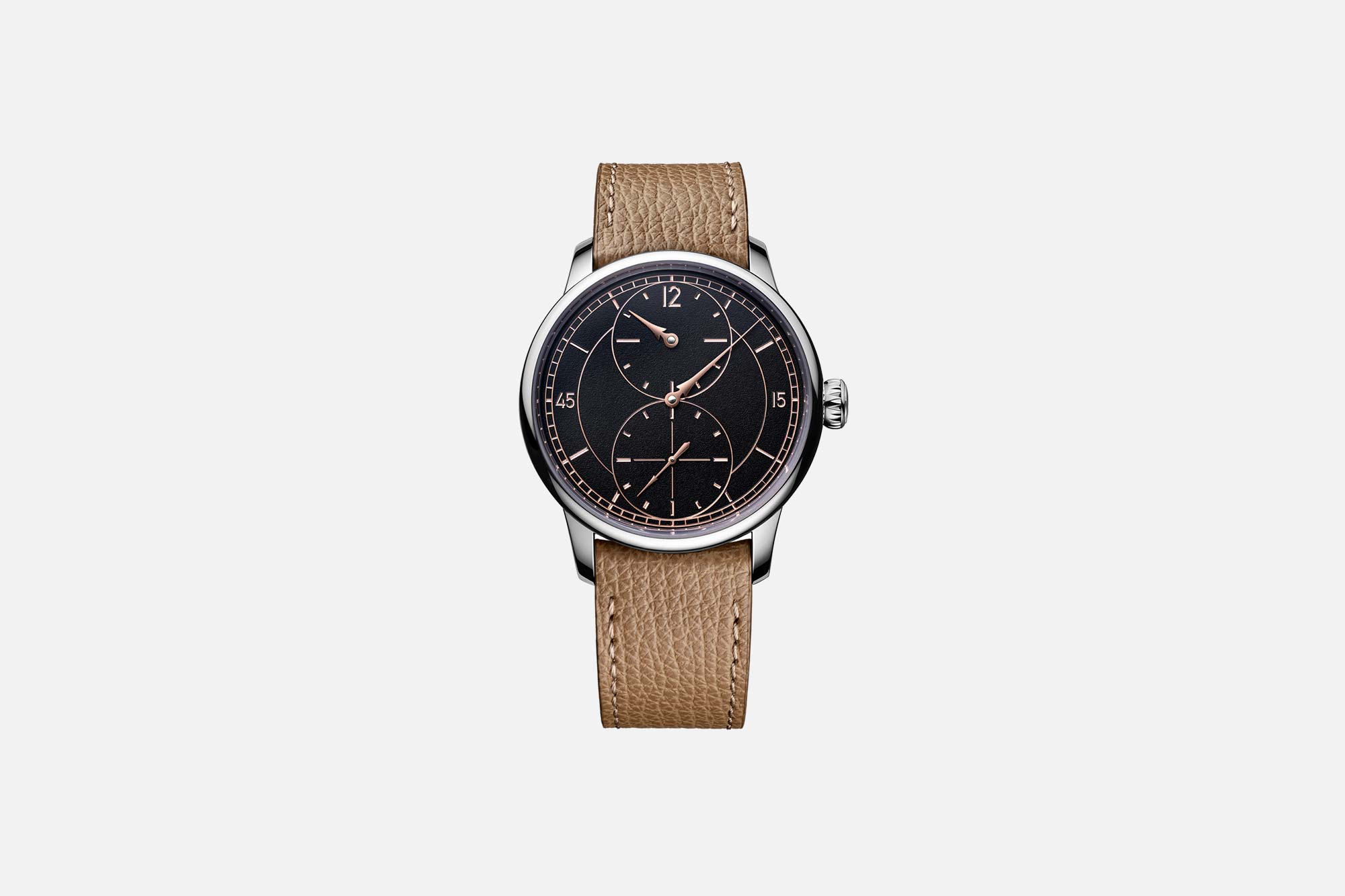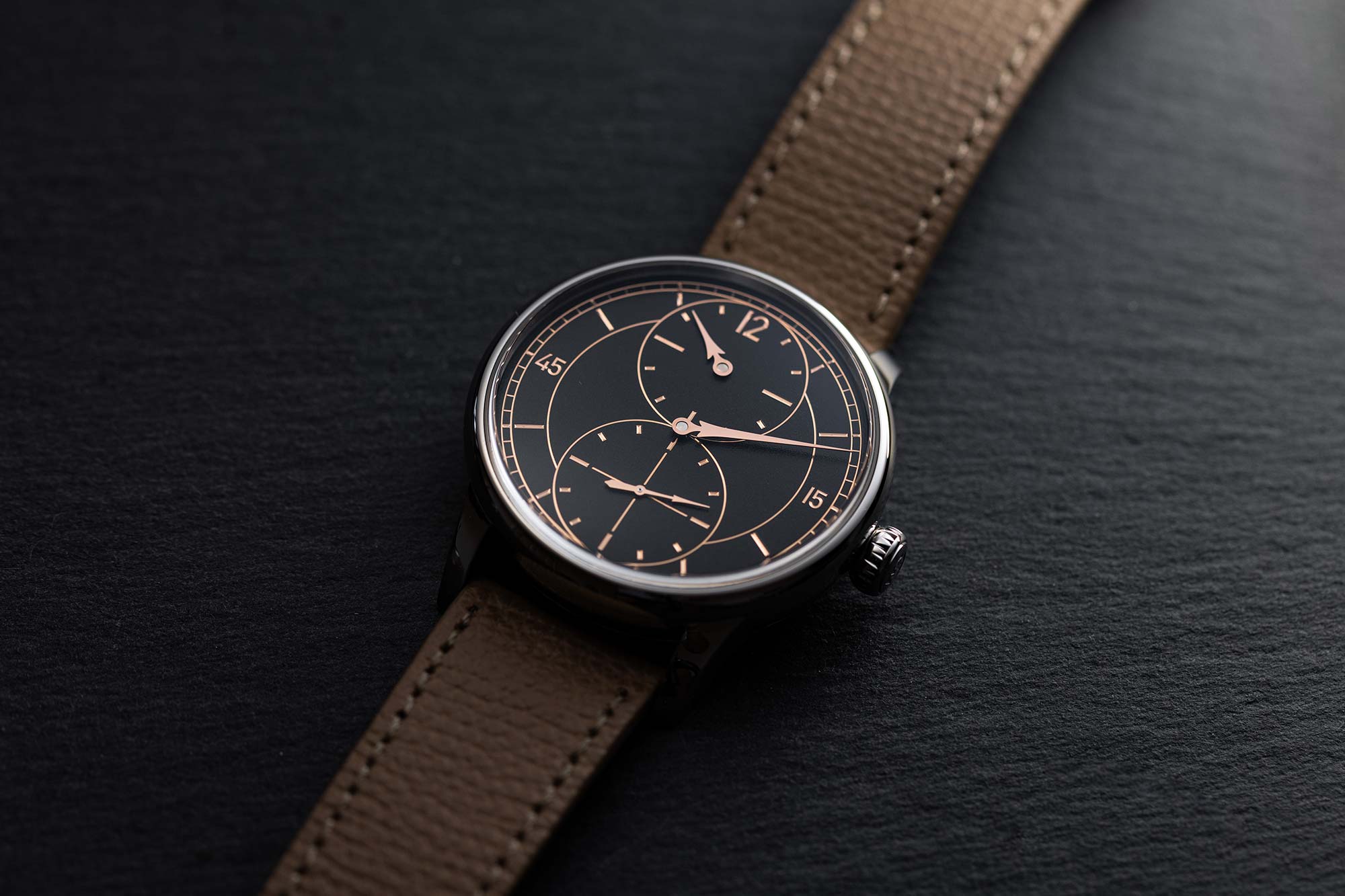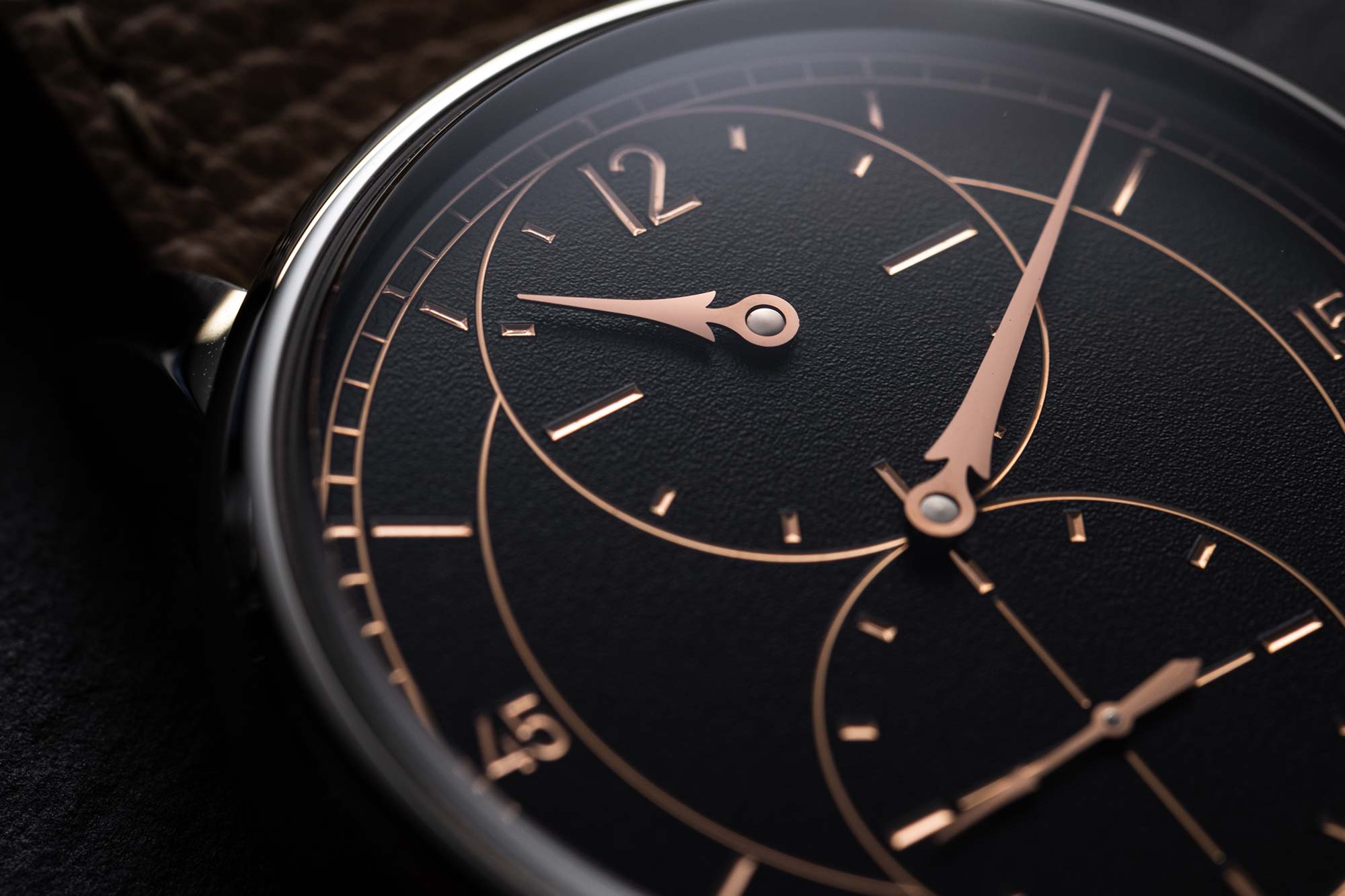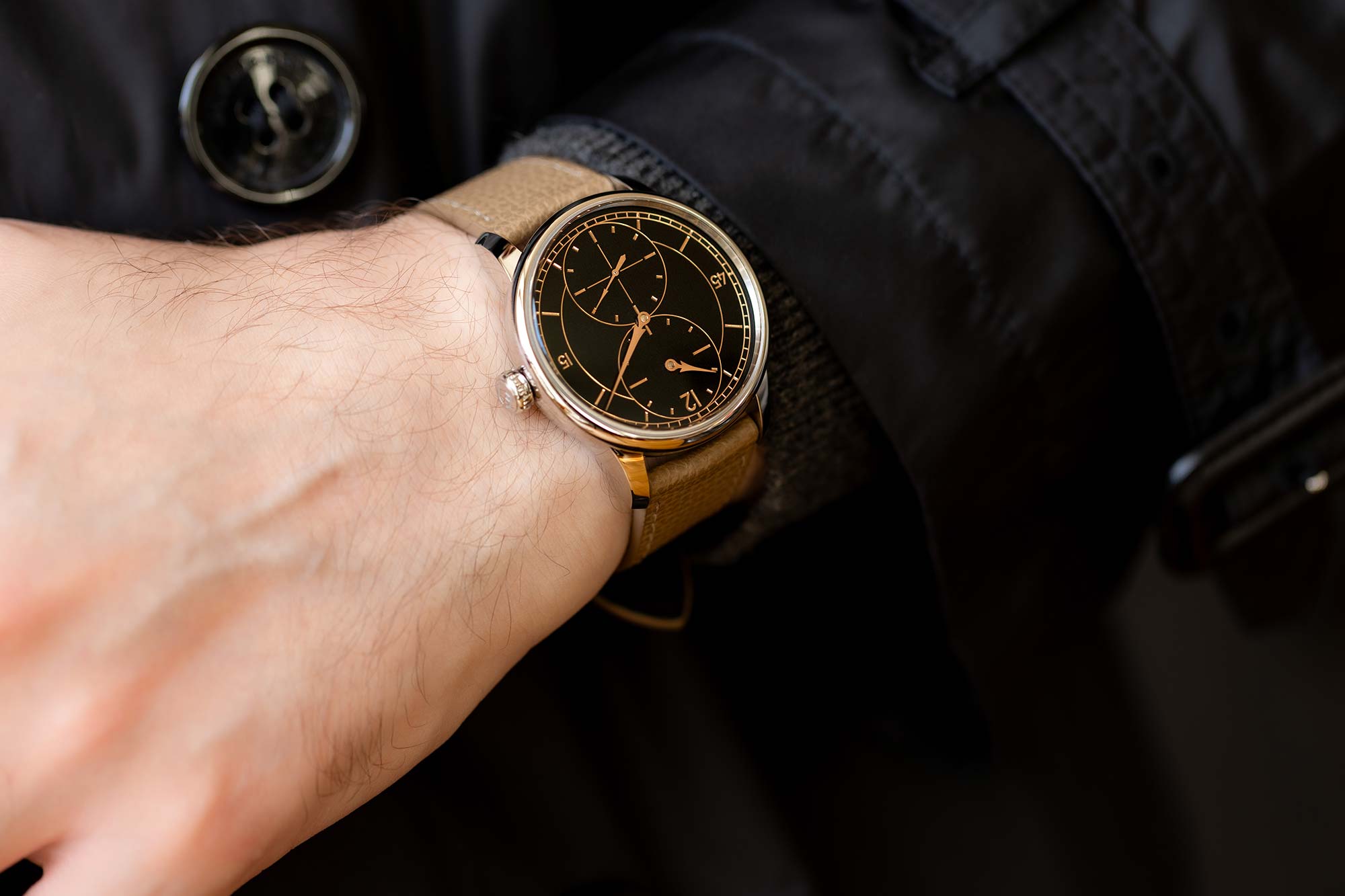Louis Erard, in a move that I think many who follow the brand will view as somewhat surprising, announced a new watch last week along with the news that their longstanding Excellence collection, which has been the home to many of the collaborative limited editions that have propelled the brand to a new level of notoriety over the past several years, is being replaced. Those watches now fall under a new banner, the Noirmont collection. This collection, in turn, is split up into three distinct subgroups, including the standalone “Noirmont,” “Noirmont X,” which would appear to be where you’ll find Louis Erard’s collaborations going forward, and “Noirmont Métiers d’Art.” This final line is where the brand’s latest release sits, the Régulateur Gravé Noir, which sees Louis Erard applying some traditional finishing techniques and vintage inspiration to a watch that has become a signature for them. To give you a sense of the other watches in the Noirmont Métiers d’Art collection, this is where you’ll find the recent Petite Seconde guilloche pieces, as well as their newer regulator with an enamel dial.
The new Régulateur Gravé Noir (we’ll just call it the Gravé from here on out) is, as Louis Erard puts it, a new spin on the classic sector dial. The regulator format, it would seem, would be a natural choice to experiment with the sector layout, and in fact you could argue that just about any execution of a regulator is going to have some sector dial elements integrated into it by default. For the Gravé, Louis Erard has brought a traditional sector dial sensibility born out of 1930s design tropes to their signature timepiece, with clearly delineated and demarcated sectors made up of concentric circles for the outer minutes track and interior running seconds and hour registers. The dial has a distinct Art Deco flavor to it, with a finely grained texture and Louis Erard’s distinctive fir tree hands.
The reason this watch is special, though, is not the sector dial inspiration, nor the regulator time telling format. Looking closely, you’ll note that the sectors and hour indicators are not printed or applied, but engraved into the dial itself. This technique is rarely used, and requires a great deal of precision (we’re fairly certain it’s mechanical precision – at a retail price of CHF 2,900 it’s not likely the engraving was done by hand). The engraving has been given a rose-gilt galvanic treatment for contrast. Engraved dials, when done well, can be really impressive, and add a lot of depth (literally and figuratively) to a design that is fairly well understood. And that is kind of the whole point of Louis Erard as a brand – every release is an attempt to re-contextualize traditional craft in new and interesting ways.
The Gravé uses the enthusiast favorite 39mm case that Louis Erard deploys only rarely. The movement is the Sellita SW266-1, an automatic caliber with 38 hours of power reserve on a full wind. Louis Erard notes that this watch is a permanent part of the collection, and not a limited edition.
It’s far too early to say what the lasting impact of the taking the Excellence collection off the books will be. At this point, it appears to be a simple name change, and doesn’t necessarily indicate a change in the brand’s identity or direction. Drawing distinctions, though, between limited edition collaborations and watches, like the Gravé, with a traditional craft element, could signal that the brand remains committed to experimenting with watchmaking craft in interesting and approachable ways. I’m reminded of their experiments with marquetry, stone dials, and guilloche, and expect that more releases along these lines might be in the works. Louis Erard









 Featured Videos
Featured Videos




